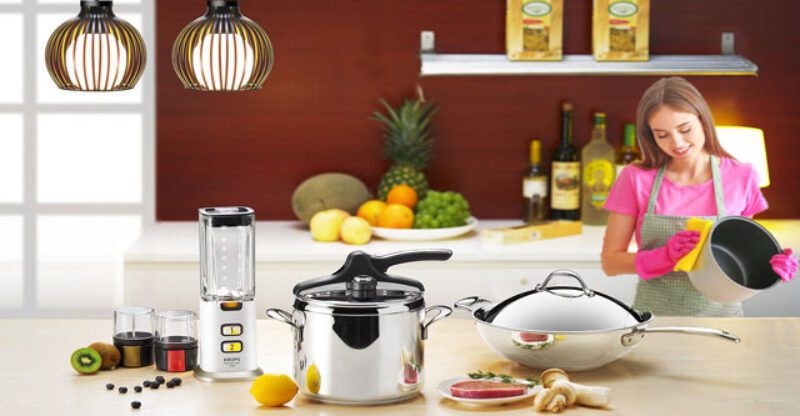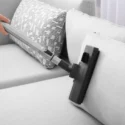How To Clean Burnt Stainless Steel Pressure Cooker?
Pressure cookers are now becoming extremely popular a must kitchen appliance and viable option to a modern cooker, and also a healthier, time-saving, and energy-saving alternative. When different foods are cooked in a pressure cooker, they can leave a dark residue that is harder to remove.
However, problems may arise, and food may be left in the cooker for a long period of time. Many individuals may be thinking about buying a pressure cooker because they are unsure how to clean it.
Learning how and when to clean the pressure cooker will help you to maintain it all in perfect condition for years to come.
After each usage, your pressure cooker will be properly maintained and cleaned. This would not only preserve it in good working order, but it will also stop cross-contamination at home.
However, you can prevent needless worry and hassle by following these tips on how to clean a burnt stainless steel pressure cooker to slack the residue with simple things available right in your kitchen.
Lets follow these tips:
Gather Your Cleaning Supplies
Before starting the cleaning process, gather the necessary supplies to make the task easier and more efficient. Here’s what you’ll need:
- A cloth or a sponge
- scrubbing brush
- Baking soda
- White vinegar
- dish washing liquid or soap
Using Hot Water
Hot water is a magical cure for all kitchen issues and products with scratches and burns. Fill half of the cooking pot with water and set it to medium heat for around 10 minutes. Allow the water to loosen the food residues so they can be easily scrubbed away later.
Cream Of Tartar And Lemon Juice
Boil a mixture of one liter of water, 2-3 teaspoons cream of tartar and the same quantity of lemon juice.
Tartaric acid is used in many aluminum pressure cookers to clean up a mess that burning food will leave behind. Tartaric acid is also known as the cream of tartar.
To use this method, fill half of the cooker with liquid and then add 2 teaspoons of tartaric acid to this now. Set the mixture on low heat and let the acid do its thing. You may also add lemon or white vinegar to this solution for its cleaning properties.
When the water begins to boil, the burns and blacked-out areas of the pressure cooker may begin to clear. Allow the cooker to continue cooking until all markings have loosened. You could then use soap to clean the surface of the pot to restore its shine.
Onions For Black Stains
Filled your pressure cooker to the top with liquid, covering the darkened regions. Put 5 to 6 onion peels in a bowl of water.
Allow the water and onion skins to boil for about 20 to 30 minutes with the lid closed. Take the pan from the heat and set it aside to cool till the water is warm. Clean the marks away with a scrubbing tool after adding soap.
Baking Soda
Cover the pressure cooker halfway with water and add 2 teaspoons of baking powder. Allow it to sit on medium heat for several hours before adding a few drops of dish soap.
Take from the heat, allow to cool, and scrub using baking soda once more to remove any remaining residue. If this method fails, consider adding a teaspoon of dish detergent.
Final Thoughts
Whenever it comes to cooking ingredients, pressure cookers are essential. If you don’t have a pressure cooker, you could end up spending hours in the kitchen, staring at a heatwave stove, waiting for your food to be prepared.
Pressure cookers, like anything else in your kitchen, need care and attention. Maintaining the shine and neatness of your cooker is vital not only for its efficiency but also for your hygiene. It’s because you’ll be the first one eating a meal you’ve prepared in it.
If you’ve found recently that your pot requires extra washing, but nothing works, the methods and ingredients listed here would help clean your cooker with ease and make it look brand new. Furthermore, most of the ingredients mentioned here are easily accessible in most kitchens on any given day, and they are also affordable.
However, since pressure cookers use steam to cook meals, keep a close eye on it at all times – including when cleaning it. Having allowed too much steam to build up within the cooker will result in potentially dangerous circumstances, which you do not want to risk. Maintain your pressure cooker properly after every use to keep it in good working condition.
To clean a burnt steel pressure cooker, fill it with water and add a few tablespoons of vinegar or baking soda. Boil the mixture for a few minutes, let it cool, and scrub off the burnt residue with a sponge or brush.
No, baking soda is a mild abrasive and generally safe to use on stainless steel surfaces without causing damage or scratching.
It is not recommended to use abrasive cleaners or scrub brushes on stainless steel, as they can scratch the surface. Stick to non-abrasive cleaning tools and gentle cleaning solutions for the best results.



